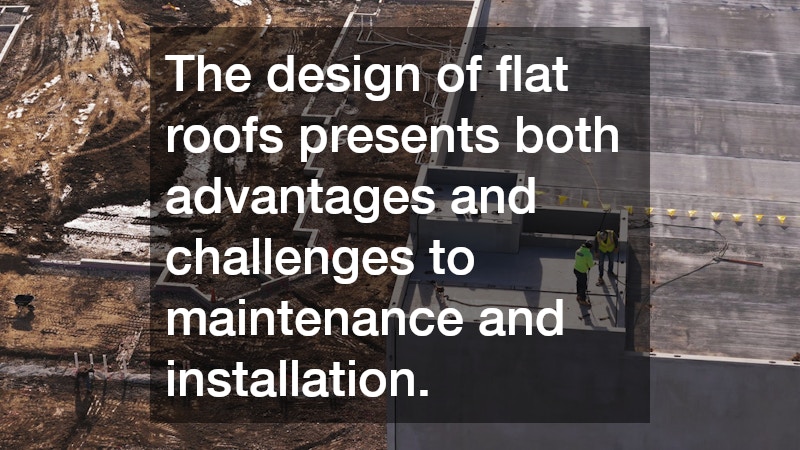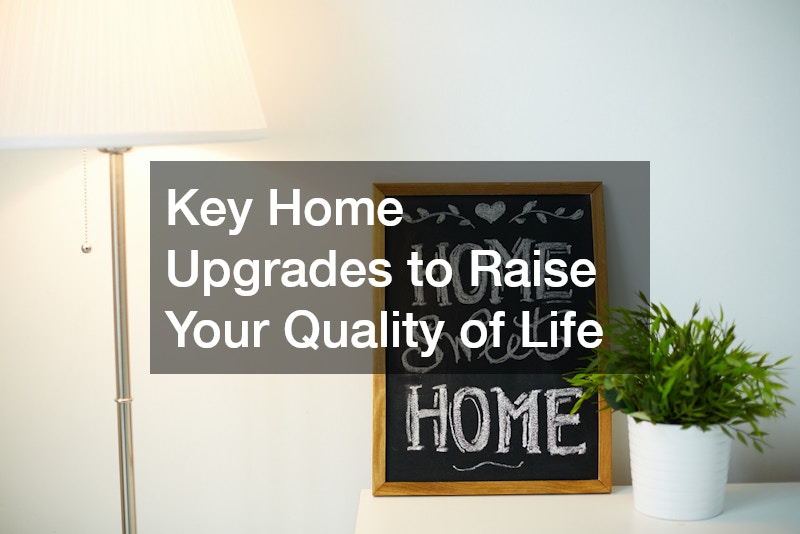Everything You Need to Know About Flat Roofing
Flat roofing offers a unique look and practical benefits, distinguishing it from traditional pitched roofing systems. Primarily used for industrial and commercial buildings, flat roofs have found their way into residential architecture, especially in modern-style homes. While the name suggests they are completely flat, these roofs typically have a slight pitch to facilitate drainage, preventing water accumulation that could lead to leaks or structural damage.
The design of flat roofs presents both advantages and challenges to maintenance and installation. Their construction allows for a wider variety of building configurations and uses of rooftop space, such as installing solar panels or rooftop gardens.
However, without understanding the specifics of materials and design, property owners might struggle with persistent issues like drainage and flat roof repairs.
Historically, flat roofs have roots in arid climates where rainfall is minimal. Despite their increasing popularity worldwide, especially in temperate regions, these roofs demand thoughtful planning and maintenance strategies to ensure longevity. Successfully managing these challenges starts with an informed understanding of material choices and their suitability to different environments.
Common Materials Used in Flat Roofing
There is a wide range of materials available for flat roofing, each with unique properties that cater to different needs and budgets. Among the most common are built-up roofing (BUR), single-ply membranes like EPDM, TPO, and PVC, and modified bitumen. Understanding the pros and cons of each material helps in making an informed choice, particularly if energy efficiency or budget constraints are pressing concerns.
Built-up roofing involves layering tar and gravel, creating a durable and hard surface that is sturdy enough to withstand harsh weather conditions. BUR is most suitable for roofs that need frequent use or traffic. However, it’s one of the more complex types to install, requiring skilled labor which can drive up costs.
Single-ply membranes have gained popularity due to their flexibility and ease of installation. Materials like EPDM offer excellent resistance to ultraviolet light and varying temperatures, making it ideal for fluctuating climates. TPO and PVC are known for their superior energy efficiency due to their reflective properties, providing long-term savings on heating and cooling costs.
Benefits of Flat Roofing
Flat roofs offer several benefits that appeal to both commercial and residential property owners. One of the main advantages is the potential for additional usable space, as flat roofs can serve as pop-up patios, green roofs, or areas for solar panel arrays. This expanded space utilization can enhance property value while offering practical benefits like lowered energy costs and improved aesthetics.
Flat roofs typically require fewer materials for covering large areas, resulting in cost efficiencies. They also facilitate accessibility during inspections and maintenance, making routine checks less cumbersome compared to pitched roofs. The simplicity of their design makes them quicker to install, potentially reducing initial outlay costs and downtime during installation or replacement projects.
Moreover, flat roofs offer aesthetic versatility, often viewed as a blank canvas that facilitates modern design elements. They complement contemporary architectural styles, allowing for streamlined silhouettes and the integration of unique features like skylights. The versatility of flat roofing design helps architects and homeowners realize their creative visions.
The Importance of Flat Roof Maintenance
Effective maintenance is crucial to extend the life of a flat roof and stave off problems like water intrusion or structural degradation. Regular inspections play a vital role in catching potential issues early, minimising the risk of costly flat roof repairs. Key aspects of maintenance include verifying the integrity of membrane seals and ensuring drainage systems are free of debris.
One maintenance hallmark is scrutinizing the roof surface for blisters, cracks, and punctures that can compromise its waterproof qualities. Vegetation growth, often overlooked, can lead to root intrusion and structural damage if left unchecked. Consistent monitoring and upkeep can circumvent these problems, insulating homeowners from unexpectedly high repair bills.
Engaging professional roofing services for periodic assessments ensures more thorough inspections, drawing on expertise that can recognize and rectify subtle issues. These services can often identify primary causes of damage, proposing targeted remedies that balance cost and longevity. Such diligence can be pivotal in averting minor problems from escalating into extensive, disruptive repairs.
Repairs: What You Need to Know
Despite regular maintenance, flat roof repairs are sometimes unavoidable due to wear and tear or extreme weather events. Timely intervention is vital; delays can exacerbate issues, translating to more extensive damage and repair costs. A critical understanding of the common repair methods and materials can offer homeowners confidence when decisions on repair solutions are necessary.
The first step in effective flat roof repairs is identifying the problem area, often achieved through careful inspection for symptoms like interior leaks or visible exterior damage. Repair strategies can vary significantly depending on the material—EPDM roofs might require patch kits, while BUR systems could need recoating. Consulting a roofing professional ensures that repairs restore the roof’s integrity and extend its lifespan.
Prevention of future issues often involves upgrades or enhancements to initial installations, such as improving roof drainage systems or adding protective coatings against UV damage. Such proactive measures, while an investment, can enhance roof performance and reduce the frequency of necessary repairs. By staying informed and engaged with maintenance and repair options, property owners can maintain their flat roofs’ efficiency and reliability.
In summary, flat roofs present a unique set of advantages and challenges that can greatly influence the overall value and functionality of a property. Carefully considering material options based on specific needs and budget constraints can greatly enhance a roof’s longevity and performance. The increasingly common integration of sustainable technologies like solar panels makes flat roofs an appealing choice for eco-conscious property owners.
Despite the regular maintenance demands, the ease of access for inspections facilitates timely interventions, minimizing potential repair costs. As issues like drainage and membrane integrity are managed proactively, the lifespan of flat roofing systems can be significantly extended. Property owners can take comfort in knowing the balance between aesthetic appeal and efficient functionality is attainable with a well-maintained flat roof.
Ultimately, a successful flat roofing installation hinges on informed decisions regarding materials, architectural considerations, and ongoing maintenance strategies. With forethought and professional guidance, the risk of unexpected flat roof repairs diminishes, allowing for extended enjoyment of the additional space and energy efficiencies these unique roofs provide. Engaging knowledgeable professionals ensures smooth installations and effective, timely maintenance, cementing flat roofs as a viable option for diverse building projects.





Post Comment